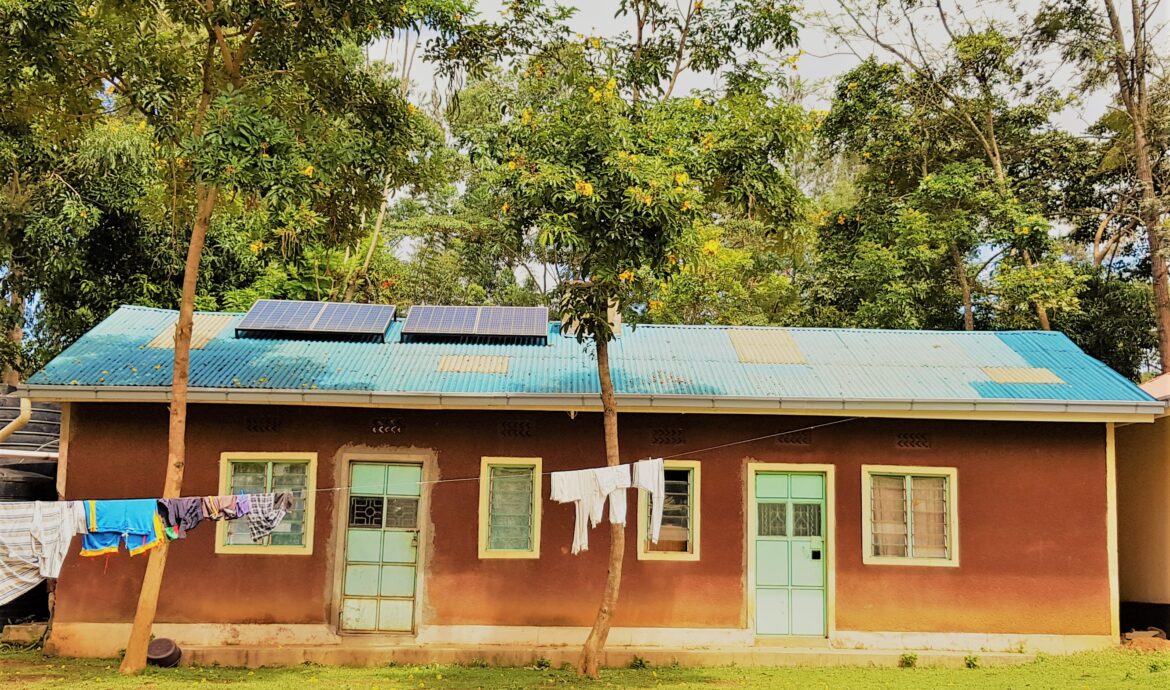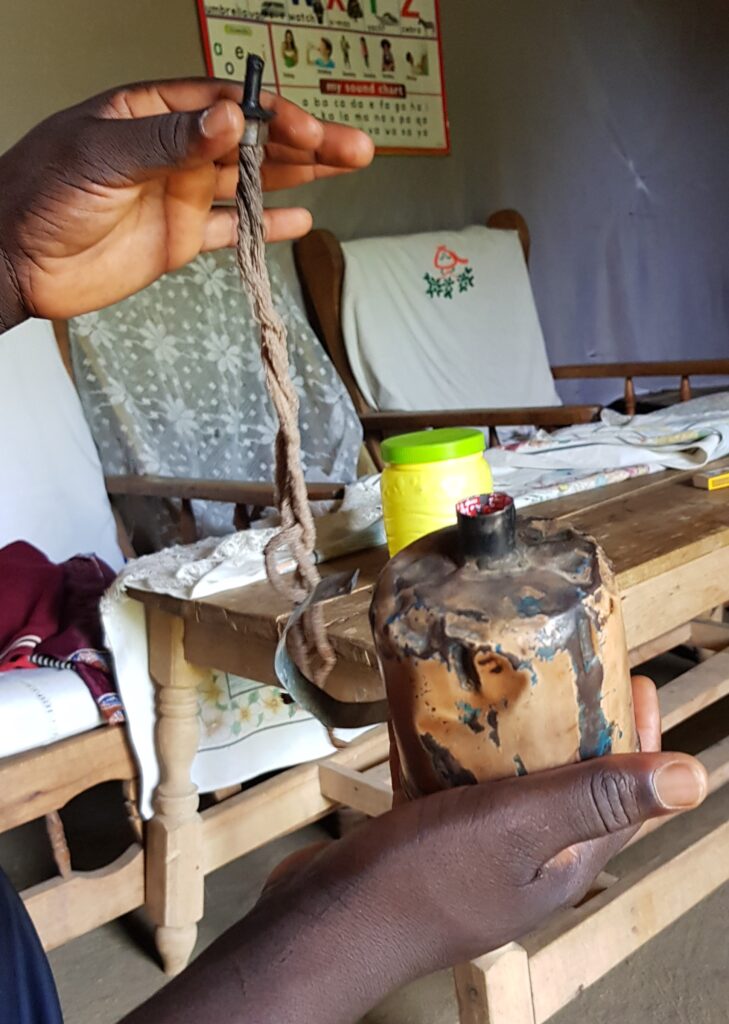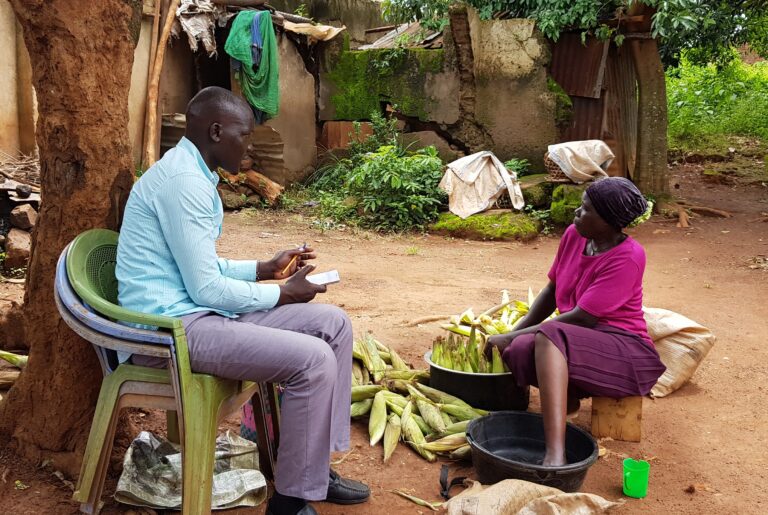
Accelerating the energy transition in developing countries: Inclusion of women in clean energy strategies
On 16.10.2020 by Cristina de los Angeles Dominguez HernandezBy Cristina Dominguez
Cristina Dominguez is a doctoral student at the Chair of Building Physics (D-MAVT) at ETH Zurich, affiliated with the Urban Energy Systems Laboratory at Empa. With a background in Civil, Energy, and Environmental engineering, her research focuses on developing a data-driven geo-spatial methodology to forecast the energy demand of rural households in developing countries to support the planning of electrification projects.
In rural communities, women are the primary energy users as they are the ones performing household chores such as cooking and domestic work. For this reason, they are the most affected along with children from the use of highly-pollutant conventional fuels. Ironically, most of the time they are excluded from clean energy strategies targeted toward transitioning to clean fuels. My research has shown that gender focused initiatives targeting women can play a major role in accelerating this transition to affordable, safe, and reliable energy.
The transition to clean energy is a major challenge for many developing countries as most of the rural population still relies on conventional fuels to meet their energy needs. Electrification is a potential solution for overcoming this challenge as it acts as a direct substitute of kerosene that currently meets the most important energy requirement for a rural household: lighting. For years, studies have presented evidence that electrification enables improvements in households’ quality of life, which as a chain effect, unlocks the path for alternative clean fuels to be included in their portfolio of choices, especially for cooking. Governments are therefore developing electrification strategies to enable this transition, since the United Nations (UN) initiative Sustainable Energy for All (SEforALL) declared this as the decade to reach global access to clean, affordable, and reliable electricity.


Kerosene lamps used for lighting in rural Kenya.
Photo credit: Cristina Dominguez/ETH Zurich.
However, policymakers often ignore small (but powerful) details that may have an impact on the performance of their electrification strategies, for example, the existing social challenges in rural communities that can slow down the positive impacts of electrification, or more specifically: the gender gap. In fact, according to UN reports – and based on my personal fieldwork research, female-headed households are less likely to be included in national electrification strategies due to their deprived economic conditions. These households do not get the same opportunities, as women are often excluded in schemes of human development or financial access, therefore they are often perceived as the ‘poorest among the poor’ which can make them unattractive as potential electricity customers. This gap is even reflected in the UN’s SDG 7, which does not include a gender component in any of its targets. This is despite the fact that studies have found that women are the ones who mostly champion rural electrification initiatives, and are keen to support the clean energy transition. For example, our recent study in rural Kenya found evidence that female-headed households doubled the share of male-headed households that adopted the use of LPG from firewood once they were provided with electricity access. The deliberate inclusion of gender-focused initiatives targeting women as part of clean energy strategies targeting rural areas is vital if policymakers intend to accelerate electrification.
The root of the problem: financial exclusion
Having electricity access benefits rural women in different aspects, starting from reducing their time dedicated to fuel collection to increasing their decision-making ability in important household affairs, as well as expanding their opportunities to dedicate time to other educational and income-earning activities. A study in South Africa found that electrification increased by 9.5% the female employment in the studied communities, while a study in Nicaragua showed that it increases the probability of women working outside of the home at 23%.
However, affordability still remains a barrier to uptake and women over and above being poor earn even less than men. Women in rural Kenya and India, for instance, earn on average only 40% of men’s income. Further, women in rural communities are constantly exposed to societal and cultural barriers (including the time spent on the collection of fuels and water, and dedicated to other household chores) that do not allow them to invest their time on personal development; which reduces opportunities for them to be included in the employment market. These gender inequalities make women and girls more vulnerable to poverty than men and boys. According to a study from the World Bank, 122 women between the ages of 25 and 34 live in poor households for every 100 men of the same age group. These gaps are further widened by the fact that women are less likely to have access to financial and credit services that support them on investing in entrepreneurial activities, which could provide them with social and economic empowerment. According to the latest World Bank’s Global Findex report, there is a gender gap in financial inclusion of 9% in developing countries.
A study in rural Kenya, presented that from 46.5% of households without access to any source of electricity, 50.4% are female-headed, and 44.7% of them are not willing to pay for connection fees (100USD). Our recent study collecting data from 250 households in Busia and Siaya counties in rural Kenya (upcoming) has shown that 62% of the households without access to any source of electricity are female-headed.

Interview to a female household head in rural Kenya.
Photo credit: Cristina Dominguez/ETH Zurich.
Gender focused initiatives can accelerate the transition
Gender focused initiatives are already showing the benefits of looking at the energy access problem from a gender perspective. One good example of how national electrification strategies can be improved for leaving no one behind is the Lao’s Power to the Poor (P2P) Program piloted from 2008 to 2015. This program was proposed as national authorities found that in electrified villages, 20 to 40% of the households (mainly those headed by females or living below the poverty line) would not connect to the grid because they could not afford it. By deploying a subsidized payment mechanism designed for these households, the program has successfully reached an electrification rate for female-headed households of 90%, from 65% since the program started.
Further, considering a gender perspective in clean energy strategies creates an opportunity to include them in the energy value chain. This can have a positive impact on women’s personal development and on how they are perceived in their communities. For example, a study in Kenya presented evidence from two projects that effectively involved women’s participation in the staff of the electricity access interventions, resulting in affecting men’s beliefs on what women can achieve and empowering them within their communities. The United Nations Development Programme (UNDP) has piloted women participation in energy access in humanitarian settings, by deploying microgrids in Yemen that are managed, maintained and promoted by women. This allows them to generate a regular income and become role models in their communities. More recently, SEforALL completed the 2020 People-Centered Accelerator Mentoring Programe with 15 women from sub-Saharan Africa that were mentored to hold management positions in energy access jobs.
Effective clean energy strategies should target women
The inclusion of women in clean energy strategies focused on rural electrification can potentially accelerate a clean energy transition and ensure that no one is being left behind. These strategies could support them on increasing the uptake of electrification interventions to achieve their energy access goals. In order to close the gender gaps, policy-makers need to ensure that the upfront electricity connection costs, as well as the investment costs on electrical appliances, and other clean cooking fuels (e.g. LPG) are affordable to female-headed households. This can be done through the development of initiatives with subsidies targeting women. Energy access interventions should also enhance the participation of female actors in the energy value chain for roles such as managers, technicians, and promoters, to ensure equal opportunities of development, contributing to their social and economic empowerment. Finally yet importantly, there is the need of creating gender-specific indicators of energy access, as currently the SDG 7 has none. This is essential, as it would encourage policymakers, investors, and project developers to improve the effectiveness of energy access interventions and adapt their business models accordingly; especially during these times that funding opportunities are rapidly increasing in the sector.
Cover photo by Cristina Domingues/ETH Zurich
Keep up with the Energy Blog @ ETH Zurich on Twitter @eth_energy_blog.
Suggested citation: Dominguez, Cristina. “Accelerating the energy transition in developing countries: Inclusion of women in clean energy strategies”, Energy Blog @ ETH Zurich, ETH Zurich, October 16, 2020, https://blogs.ethz.ch/energy/energy-access/
If you are part of ETH Zurich, we invite you to contribute with your findings and your opinions to make this space a dynamic and relevant outlet for energy insights and debates. Find out how you can contribute and contact the editorial team here to pitch an article idea!


Leave a Reply